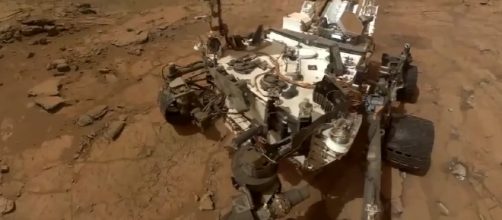Amongst the rock samples gathered by the Curiosity Rover from the surface of Mars, scientists found a wide assortment of minerals from the rocks that were collected from the lowermost parts of Mount Sharp. The Curiosity rover reached the base of the mountain in 2014 after landing in the Gale Crater in 2012. The rover found evidence that there could have been a lake-and-stream system in the Red Planet’s ancient past.
However, in the study published in the “Earth and Planetary Science Letters,” the scientists state that after the evaluation of the rocks collected from the base of the Mount Sharp, it was evident that Mars did support lakes in its past, roughly around 3.5 billion years ago.
The layers of rocks collected from the lowermost layers of Mount Sharp displayed the accumulation of a wide variety of sediments, which clearly points at the changes that took place in the area.
Martian rocks point toward diverse environment on the planet
The scientists suggest that the amalgamation of minerals that was found in the rocks taken from Mount Sharp show that those minerals precipitated from the presence of water. The range of minerals that were collected in layers in the rocks also suggests that the crater was not home to just one environment, but many. Elizabeth Rampe, the first author of the study, suggests that these minerals were deposited in the forms of layers on the Red Planet about 3.5 billion years ago, a time when our planet the Earth, was taking baby steps toward it long journey to support life.
The scientists are of the belief that the environment of early Mars may have been similar to the environment Earth had in its initial days. Thus, if this theory is correct, then early Mars may have had an environment that was habitable and conducive to support life. The Mineral Deposits were found in four rock samples, which were drilled out from the base of Mount Sharp. The array of mineral deposits that got collected in layers indicate the presence of water with different pH levels with erratic oxidizing conditions. The examination of minerals also revealed that there could have many source regions for the rocks in the Red Planet’s “Marias Pass” and the “Pahrump Hills.”
Minerals in rocks indicate presence of water
The latest study focuses on the findings from four rock samples.
Three of the samples were gathered by the Curiosity rover from the Pahrump Hills. The layers of mineral deposits in the sedimentary rocks contains much more data about Mars’ ancient past and could also let us know if the Red Planet hosted life.


